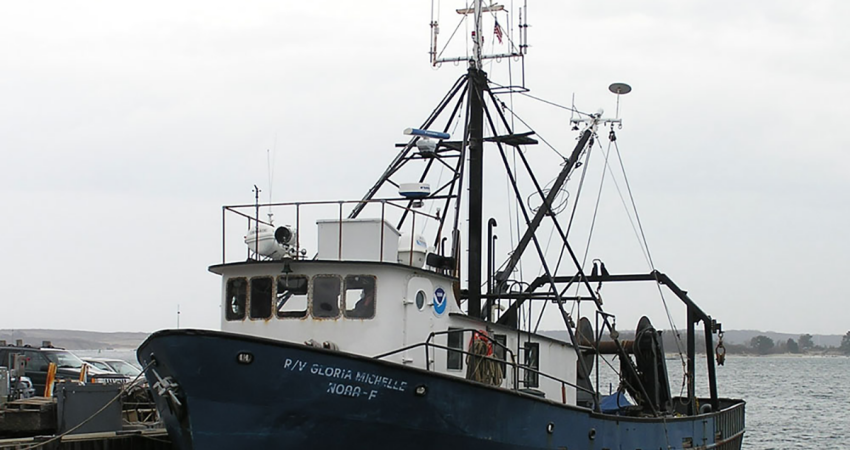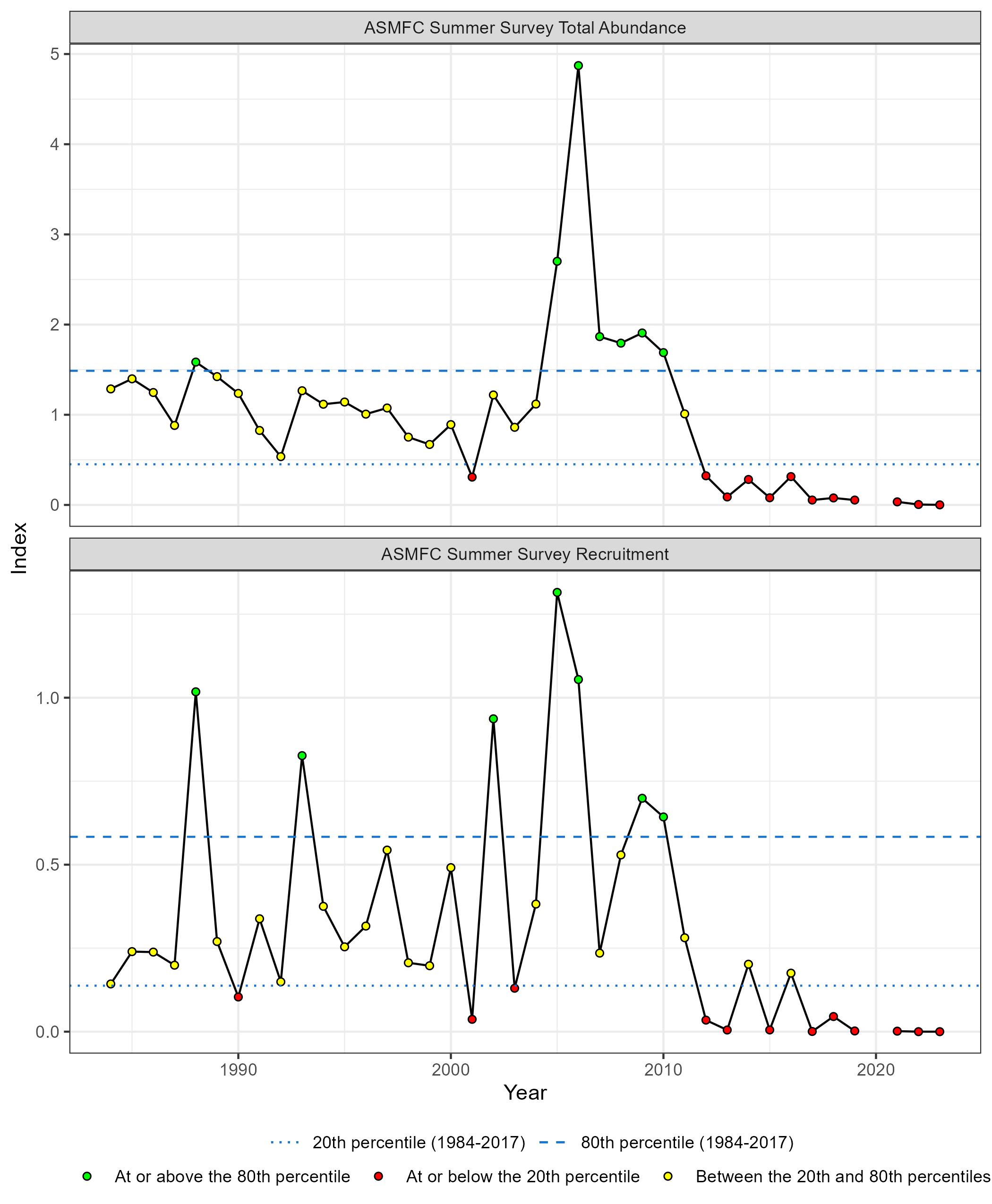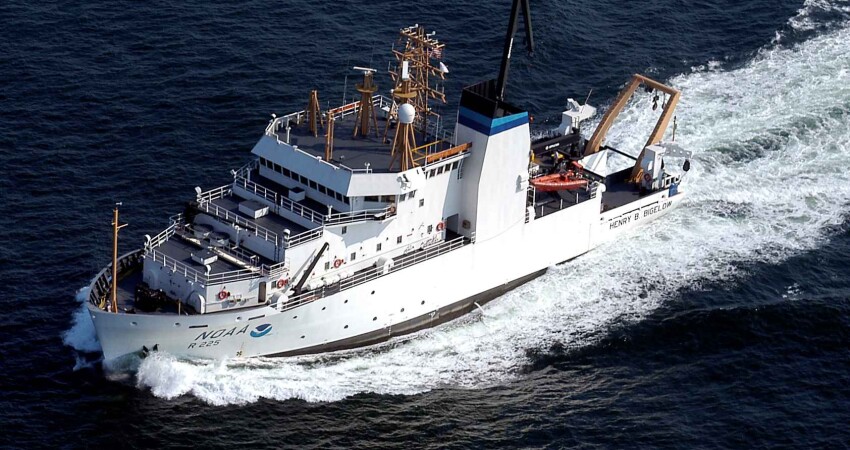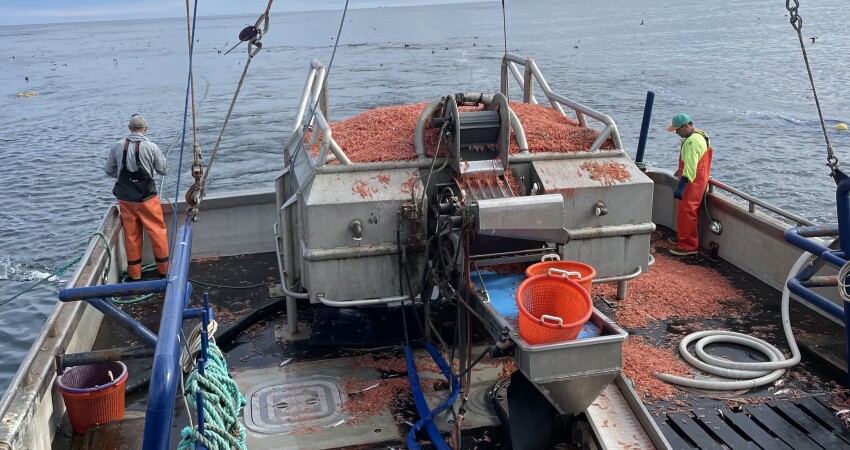Maine fishermen hope to discover if Gulf of Maine shrimp stocks could support a revived fishery. After a precipitous drop in landings in 2013, Maine’s shrimp fishery officially ended with a moratorium imposed by the Atlantic States Marine Fisheries Commission (ASMFC) in 2014. A few boats continued fishing in a test fishery until 2021 when the Shrimp Section extended the commercial and recreational fishing moratorium through 2024.
“This three-year moratorium was set in response to the low levels of biomass and recruitment and the fact that should recruitment improve, it would take several years for those shrimp to be commercially harvestable,” reads the ASMFC website. After that, monitoring relied primarily on surveys conducted by the R/V Gloria Michelle, which have now been curtailed.

“Federal money to continue the surveys was cut, so the ASMFC shrimp section asked for ideas,” said Glen Libby, who has been involved in the shrimp fishery for decades and whose brother Gary chairs the Advisory Panel. Libby wrote a draft proposal for a plan to sell licenses to previous license holders , allow them to fish at their own expense, and report their findings.
“It would give you a much better picture of stock status than using Gloria Michelle or the Albatross, which is what they were doing,” said Libby, who questioned the validity of the data collected. They had too much spread on the net and were getting mud half the time. It was like towing a butterfly net with a dump truck.”
Noting that the technical ability to collect real-time data is much more advanced than in the past, Libby’s plan calls for the vessel to utilize daily catch reporting software, VMS monitoring, onboard cameras, and dockside monitoring to collect and report data on shrimp stocks and abundance.
“If there is nothing to be caught, then the current research regime is validated,” said Libby. “But if the commercial boats participating in the research do find shrimp, then we have another data source to make accurate decisions about restarting this important winter fishery.”
According to Katie Drew, who handles the data at ASMFC, restarting the fishery is a hope against hope. “The industry is trying to maximize catch; we’re looking for standardized sampling and consistency. But all the signals, from the summer survey and industry data, show a strong decline starting in 2009.”

Drew noted that the ASMFC uses data from the summer survey conducted by the Gloria Michelle, as well as the Maine and New Hampshire Spring survey, the Northeast Fisheries Science Center NEFSC fall survey conducted by the Bigelow and previously by the Albatross. “That all goes into the stock indices, and it’s weighted differently.” While the summer survey targeted shrimp, the spring and fall surveys are mixed species surveys. “We look at the quality of each tow,” shared Drew. “If something goes very wrong, we won’t include that in the data set. Then, we give each survey data set a coefficient of variance. Data from fishermen might get a number around .5, while the surveys might get .15 or .12, so you could say the data from the fishery is weighted three times higher than the survey data.”

After more than a decade of survey and fisheries data tracking a consistent decline, the ASFMC sees little hope of restarting the northern shrimp fishery. “We want it to recover,” said Drew. That story is so strong, but it doesn’t look good.”
2023 was the last year of the summer survey, and the ASMFC is looking for ways to continue to collect data. “The shrimp technical committee is looking at what a viable project would need and come up with a budget,” said ASMFC policy analyst, Chelsea Tuohy. “Once they do that, they need to collaborate with the Advisory Panel that Gary Libby chairs.”
Among other things, Tuohy notes that the technical committee will have to determine what methods fishermen will need to use, how their methods and findings will be verified, and how much it will cost.
“All the boats involved have cameras,” said Libby. “So that shouldn’t be a problem.”
Drew noted that the surveys not only count shrimp but also track temperature and predation. “What we’re seeing is temperatures are rising, and so is predation. We count species like haddock, hake, spiny dogfish, and other species that eat shrimp,” she shared. “Back in the 1990s, when things were good for shrimp, water temperatures were low, and there was low predation.”
Drew added that other regions where shrimp is harvested are experiencing negative trends. “I don’t have the data, but they are seeing declines in abundance and are cutting quotas,” she said.
With all the downward trends, Drew sees little hope for restoration in the foreseeable future, but for fishermen and communities that are economically and culturally connected to the northern shrimp, it’s hard to give up hope. Many, like Glen Libby, are hopeful that the resource may still be out there.
“We want their data so that we get their buy-in to what we’re seeing,” said Drew.
The ASMFC shrimp technical meeting on March 5 determined what an industry data collection program would require and what it would cost. While the outcome of that meeting has not yet been shared, a team in Maine comprised of Libby, the Maine Department of Marine Resources commissioner, Pat Keliher, Jerry Leeman, founder of the New England Fishermen’s Stewardship Association (NEFSA), and others met on March 13 to move forward with a plan.
According to Leeman, the nature of the gear and methodology of the surveys may be missing the shrimp. “The Gloria Michelle switched from Portuguese doors to Bison 7 doors, which are overspreading the net and lowering the headrope. I know the shrimp go to bottom during the day when they’re inshore spawning, but offshore where they survey, they can be higher in the water column.”
Leeman also pointed out that the net's configuration is a recipe for failure. “With that spread, the angle of attack is 24 degrees,” he shared. It’s going to put the foot chain ahead of the sweep and plow into the mud.”
Tor Bendikson at Reidar’s Marine in New Bedford has built all the nets for the Gloria Michelle. “NOAA has protocols on how the nets are supposed to be built,” Bendiksen said. “When they switched to the Bison doors, I don’t know if they calibrated those. The Bisons are tricky; if you move some washers around, it changes how it spreads.” Bendiksen also noted that the net design is somewhat antiquated. “I wouldn’t build it for commercial fishermen,” he said. “If I built that net for fishermen here, they wouldn’t use it.”
Libby, Leeman, and many others believe that generating and collecting fisheries data is the best way to determine the status of the resource. They are moving forward with developing a program to get boats back out on the water using proven gear and fishing in areas where shrimp may be found. “This will come out of our pockets,” said Leeman. “We want to get five boats out of Maine, five out of Massachusetts, and a couple out of New Hampshire. I’m working on that, talking to people. Because the only way we’ll get access to this fishery is through data.”
Compiling data that the regulators will accept will require some agreement on methods and gear. “The technical committee met in March and started working on a proposal,” said Chelsea Tuohy. We need to set a catch cap and start working with the Advisory Panel to come up with a scientifically valid plan. They will meet in April to finalize that.”
Maine shrimpers have not had a season in a decade, but those who can are developing the gear and protocols needed to restart the fishery if there are shrimp out there.







